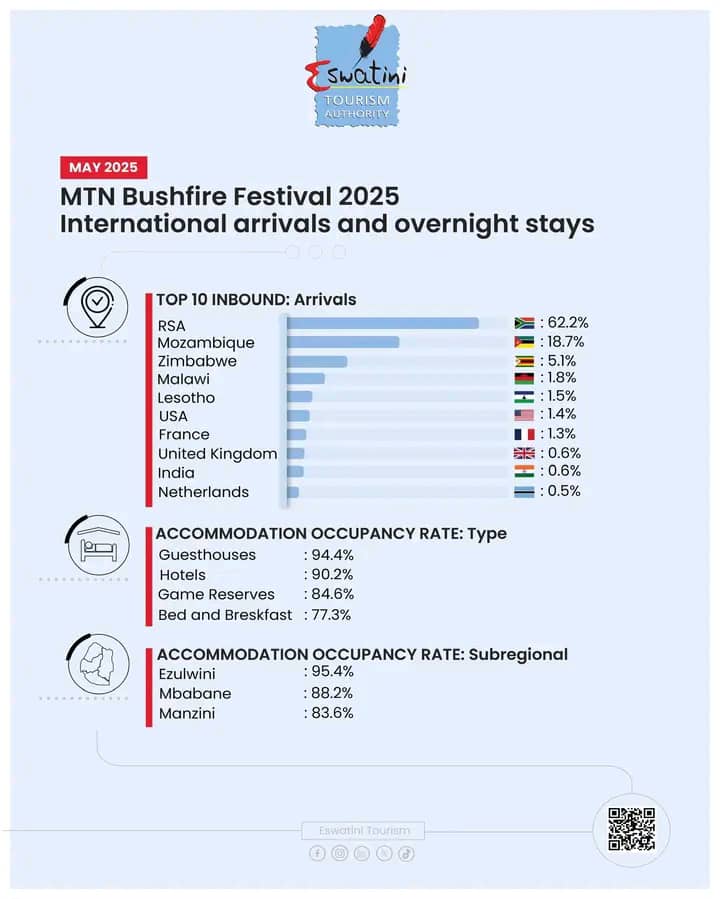
The weekend of the MTN Bushfire Festival 2025 period experienced a substantial influx of international visitors into the Kingdom of Eswatini, recording a total of 18 372 international visitors were recorded at border posts, according to a statement released by the Eswatini Tourism Authority (ETA).
While this figure reflects considerable enthusiasm from both regional and international attendees, it represents a decline of about 19.7% international visitors arrivals compared to the corresponding period in 2024. However, it is still 20.6% higher than the year 2023.
The statement notes that the majority of arrivals originated from the Southern African region, followed by visitors from overseas. The MTN Bushfire Festival, like other prominent events hosted within the country, makes a significant contribution to Eswatini’s economic growth through its impact on the tourism sector, generating substantial revenue, creating employment opportunities for local communities, and enhances the nation’s visibility on the international stage
“Our top five source markets show that there was a decline in International Arrivals from our major source market, the Republic of South Africa (RSA), and a 37% increase in our second biggest source market, Mozambique. A sizeable number of Malawians visited the Kingdom, increasing by a staggering 329% from 79 to 339 tourists,” reads the statement.
Accommodation facilities experienced significant occupancy rates during the MTN Bushfire Festival period, attracting both domestic and international travellers:

By subregion, the Ezulwini-Malkerns corridor led with an occupancy rate of 95.4%, followed by Mbabane at 88.2%, and Manzini at 83.6%.
The average room occupancy rate reached 90.4%, compared to 91.8% recorded in 2024. This decrease could be attributed to improvements in camping site facilities at the festival and possibly other accommodation Airbnb which provided alternative accommodation options for attendees.
Among accommodation types, guest houses recorded the highest occupancy rate at 94.4%, followed by hotels at 90.2%, game reserves at 84.6%, and bed and breakfast establishments at 77.3%.
